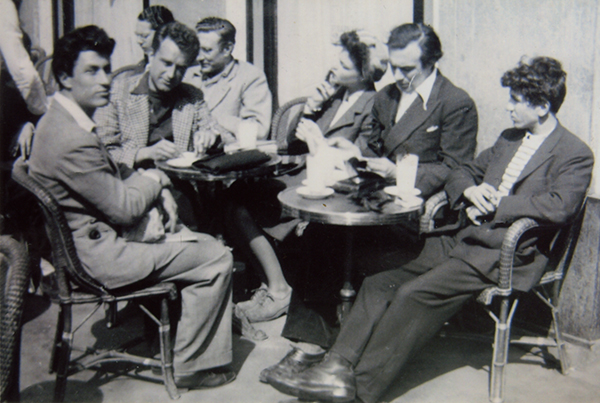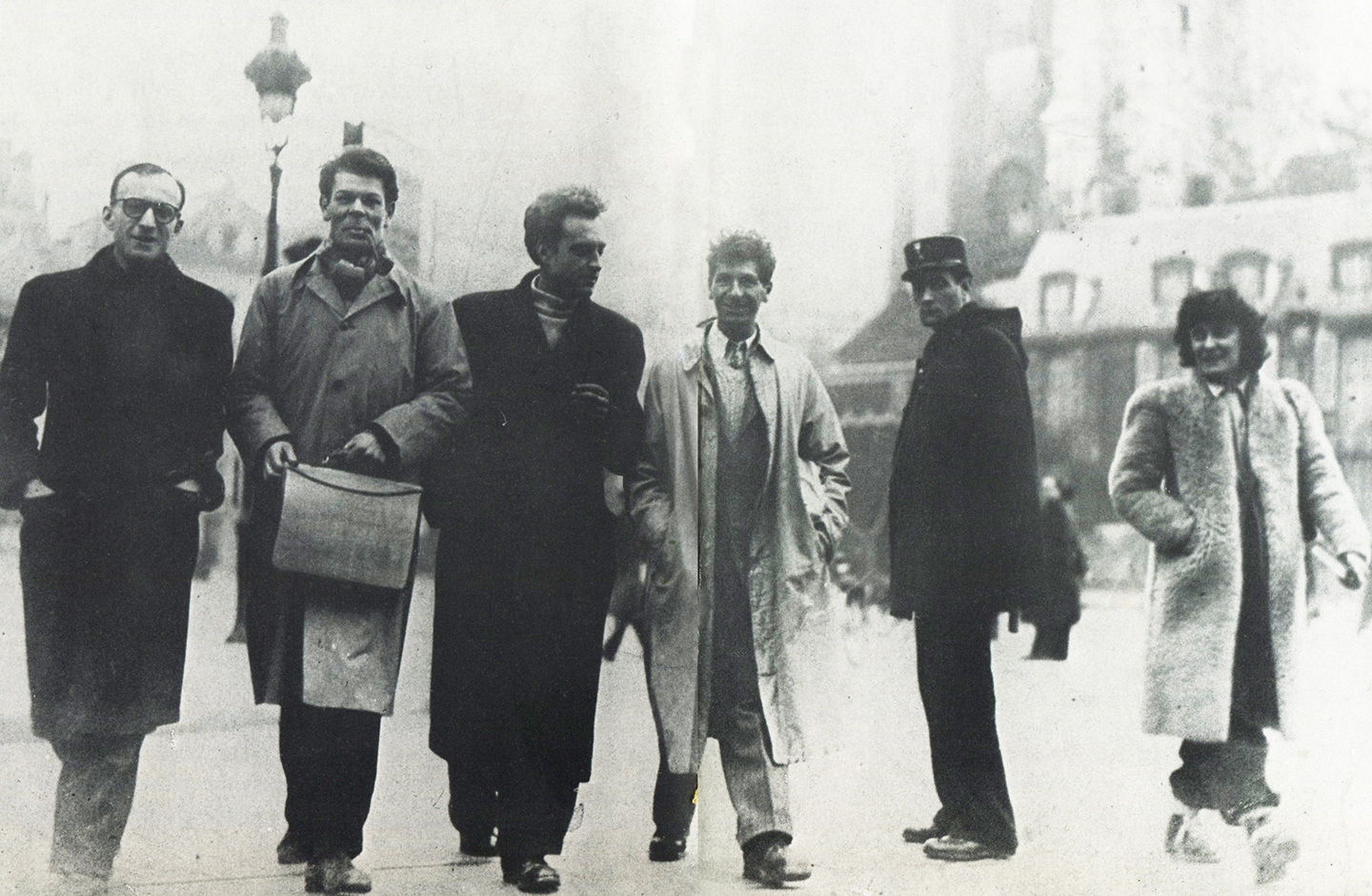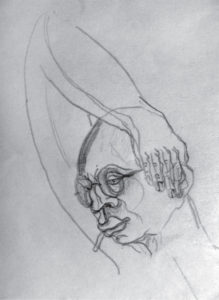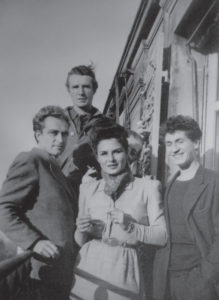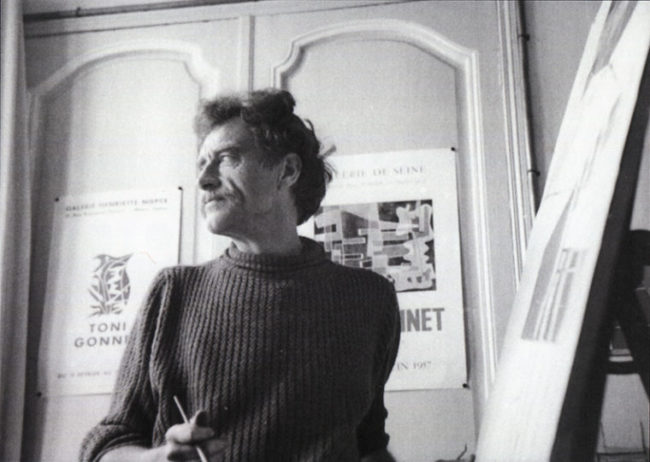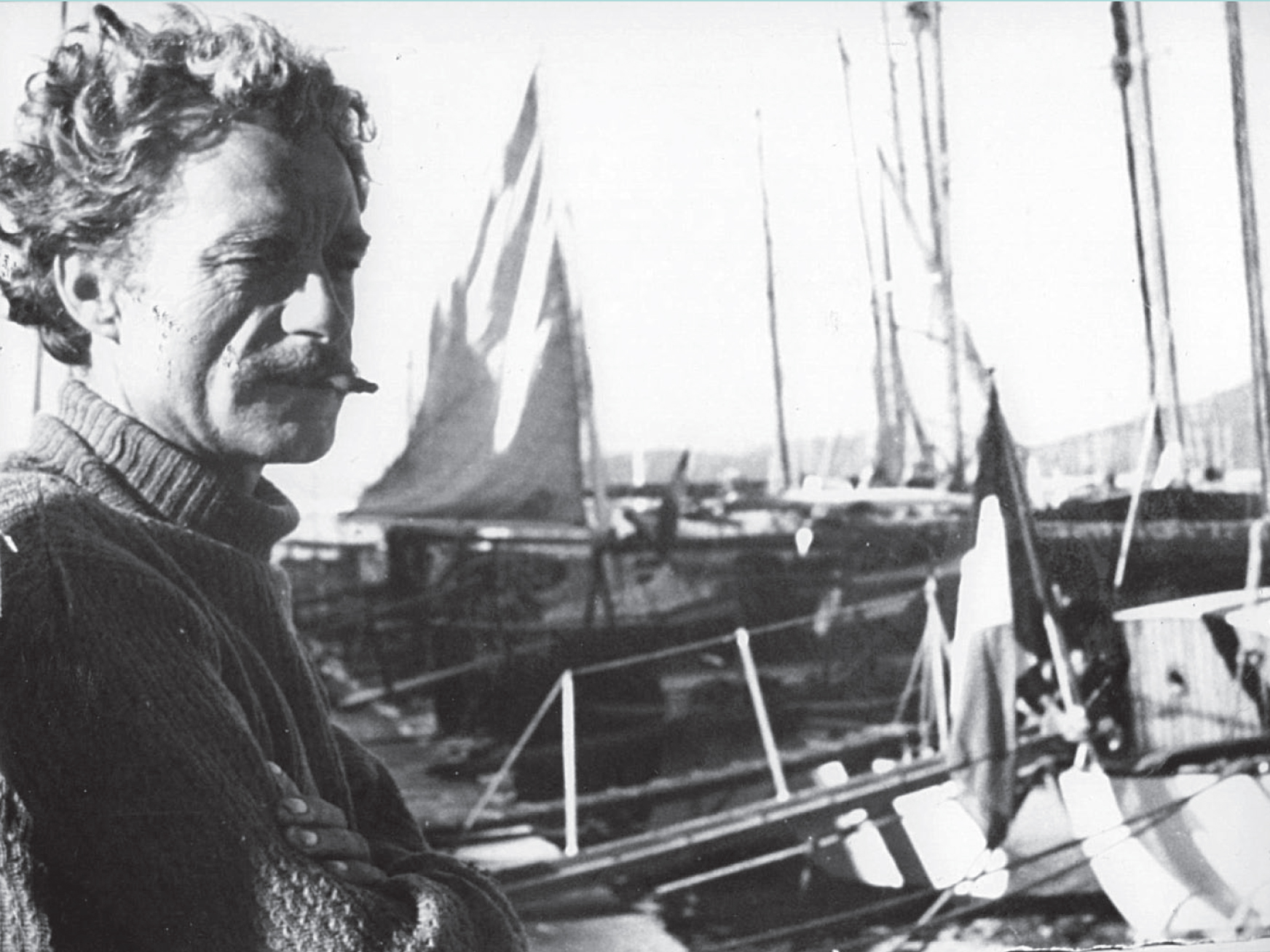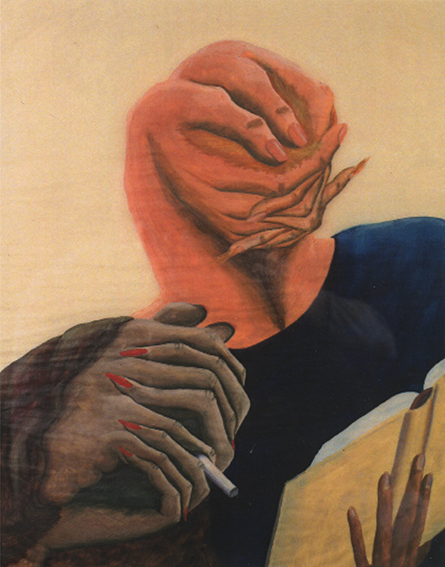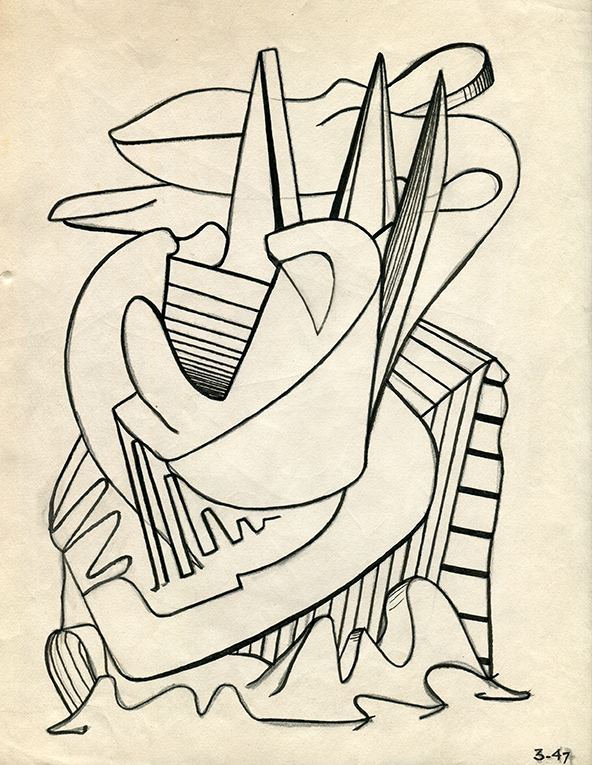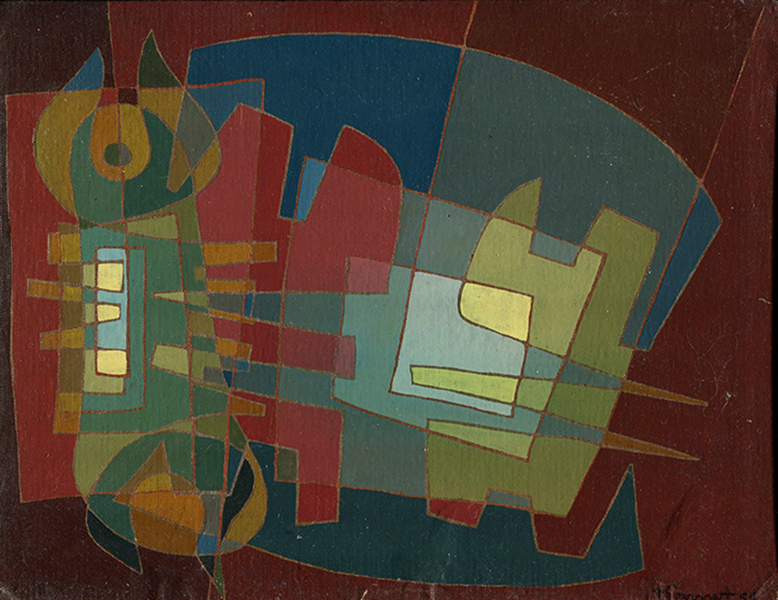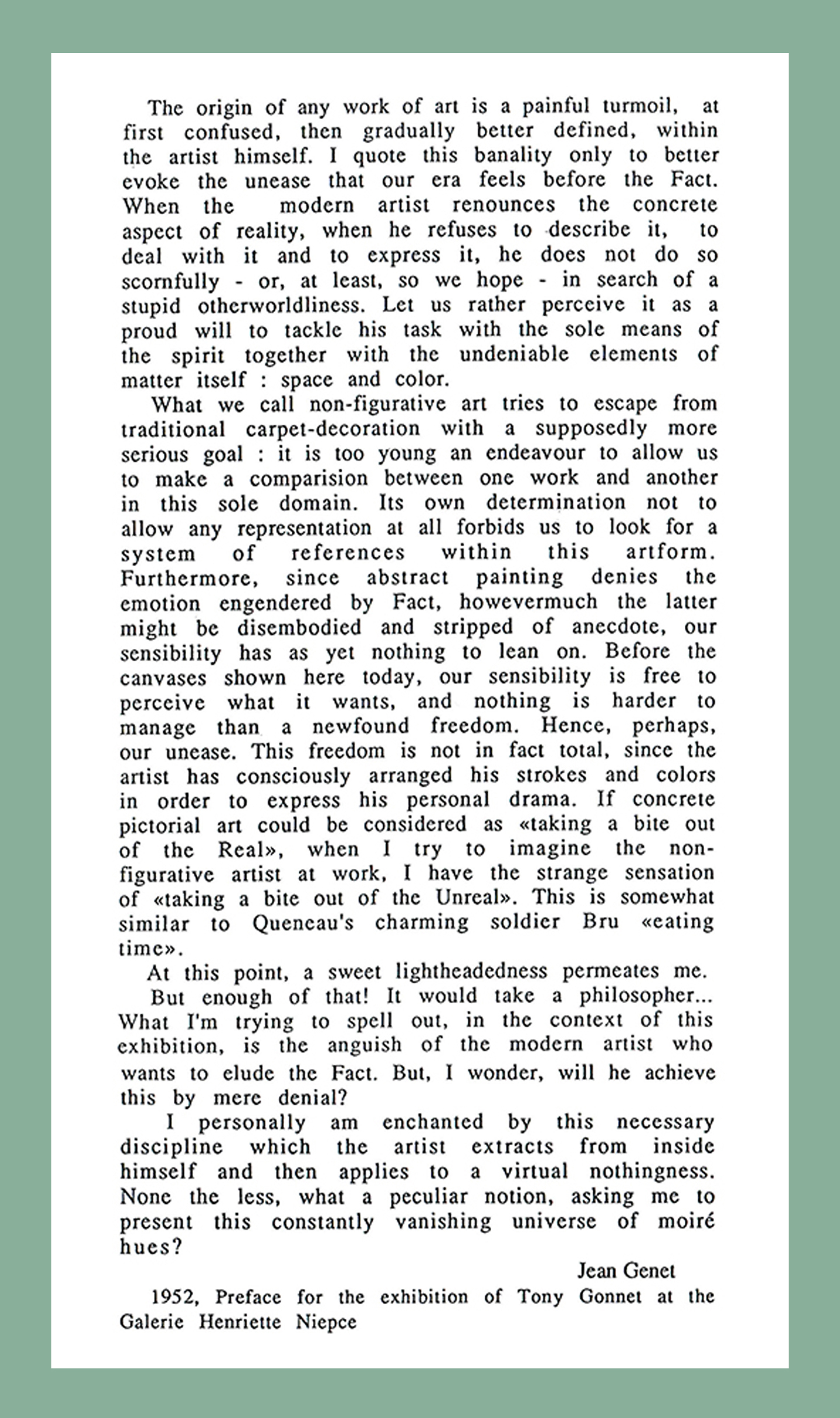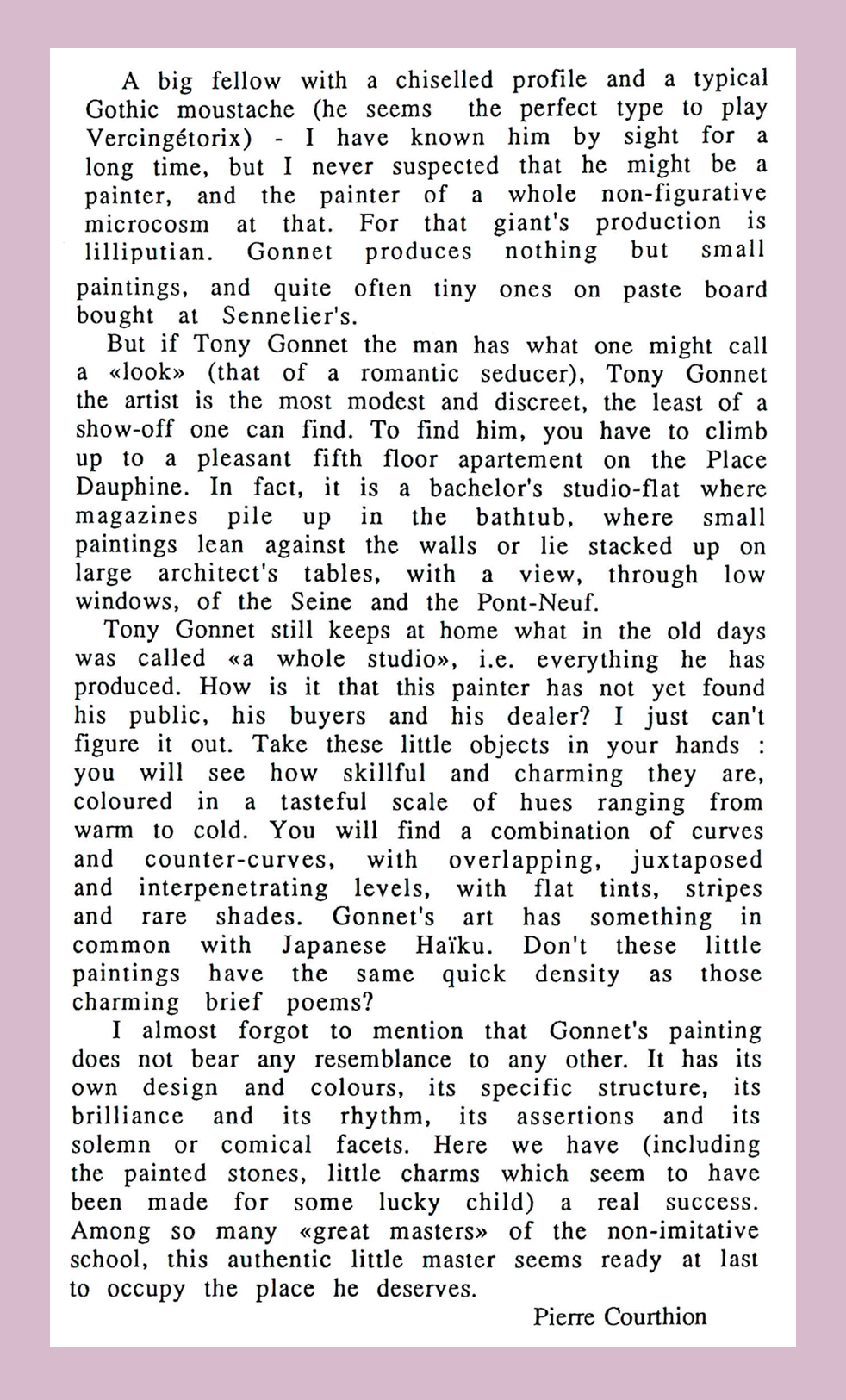TONY GONNET
(1909 – 2004)
EXISTENTIALIST PAINTER
Tony GONNET, born in August 22nd 1909 in Péronne, from a family of Picardie notables belonging to the nobility of the gown since the 17th century, died in September 26th 2004 in Nîmes, at the age of 95. From 1941 to 2002, Tony Gonnet has produced a considerable pictorial work which found appreciation as early as the 1950’s. He loved life, and said that each of his works was an offering made to it.
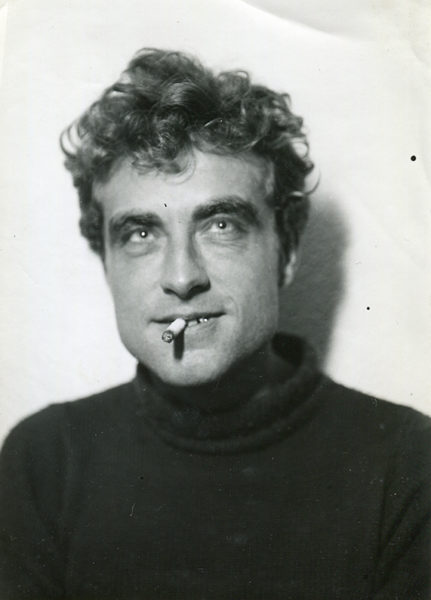
Tony Gonnet in Paris dunring the 1940’s.
In Paris he first became an industrial draughtsman, and from 1936 onwards he contributed to designing an aircraft engine of a completely novel design. In 1939 the army placed him in a machinery company as an engineer, specialized in the construction of aircraft engines. The company moved to Casablanca in June of 1940; there, in 1941, he met André Breton and Saint-Exupéry who were both on their way to America. Unable to obtain a visa for himself, Tony Gonnet returned to Paris in January of 1942, still working on aircraft engines, and moved into the Hôtel de la Louisiane on the rue de Seine, where he stayed until 1953. He was an avid reader and frequented the Café de Flore, as he did before the war.
He became one of the figures of Saint-Germain-des-Prés and numbered amongst his many friends Jean-Paul Sartre, Simone de Beauvoir, Jean Genet – who prefaced his first Parisian exhibit in 1952 – as well as Albert Camus, Maria Casarès, Simone Signoret, Boris Vian, Jacques and Pierre Prévert (Tony himself had been an actor: in 1938 in the film Les cinq sous de Lavarède, and also appeared in 1943 in Adieu Léonard, by Pierre Prévert), Paul Grimault, Marcel Duhamel, Gaston Gallimard, Alain Cuny, Roger Blin, Lola et Marcel Mouloudji, Henri Crolla, Claude Luter, Fabien Loris et Serge Reggiani.
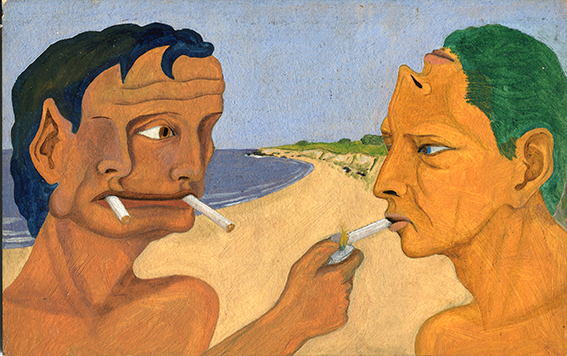
1 “Fumeurs”, oil on canvas, 17×27 cm, 1946
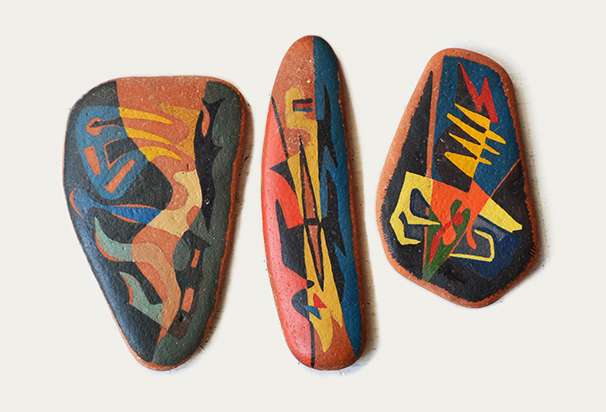
2 “Sans titre”, painted rocks, around 1947.
For Tony Gonnet what mattered most was imagination, and perhaps to him drawing an engine was only marginally different from painting a picture. Both abide by the same formal approach that aims for harmony, he used to say.
Tony Gonnet, dans les années 50,au port de Saint-Tropez où il amarrait souvent son bateau.
In 1941, in the ennui of Casablanca, Tony Gonnet had started to draw, and then paint, in a Surrealist style (figure 1). In 1946 he abandoned figurative surrealness in favour of abstraction, making sole use from then on of geometric forms and shaded tones, in his own unique style. His first abstract paintings are mini-tableaux of 19 × 13 cm (figure 3) as small as the pebbles picked up on Mediterranean beaches that he liked to decorate (figure 2). He then movedon to more ample formats, always tempered by his modesty.
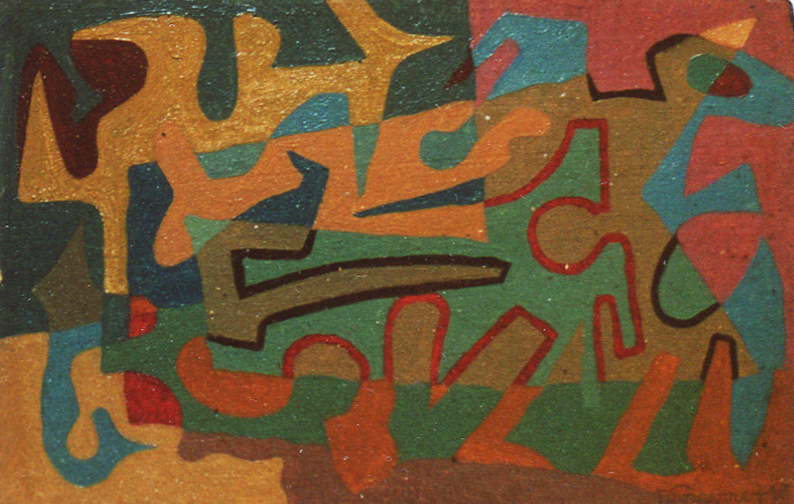
3 “Sans titre”, oil on cardboard, 19×13 cm, 1948
He also sought to touch on music via his painting, as music was to him the pinnacle of creative freedom. As early as 1941 he took to drawing characters with musical instruments for heads. For him, no painter had ever equalled Paul Klee.
The succession of Tony Gonnet’s paintings bears witness to his plastic research formed by his time as an engineerdraughtsman. Each of his works aims to achieve harmony of shapes and colours, apparently to bring joy. One can see that from 1969 onwards he sometimes introduced profiles of human faces in his geometric compositions, which are perhaps less of a recollection of surrealism than the search for a reconciled world.
Whatever painting he was working on was the provisional answer to his existential questioning. The man was, it bears repeating, modest (he wrote in 1947 that “the road necessarily passes through self-effacement”) and always denied himself the opportunity of seeking publicity or fame through his connections.
One can roughly divide Tony Gonnet’s opus as follows:
the surrealist period goes from 1941 to 1946 (figure 4). Around late 1946 begins abstraction in drawing (figure 5) and in painting on paper, canvas and wood. The works of the 1950s and 1960s, which are the pivotal times of his work, are in rather sombre colours (figure 6).
Thereafter, in the 1970s and 1980s, his pallet brightened (figures 7). After 1990, Tony painted mostly gouaches, which integrated human profiles on a regular basis (figure 8).
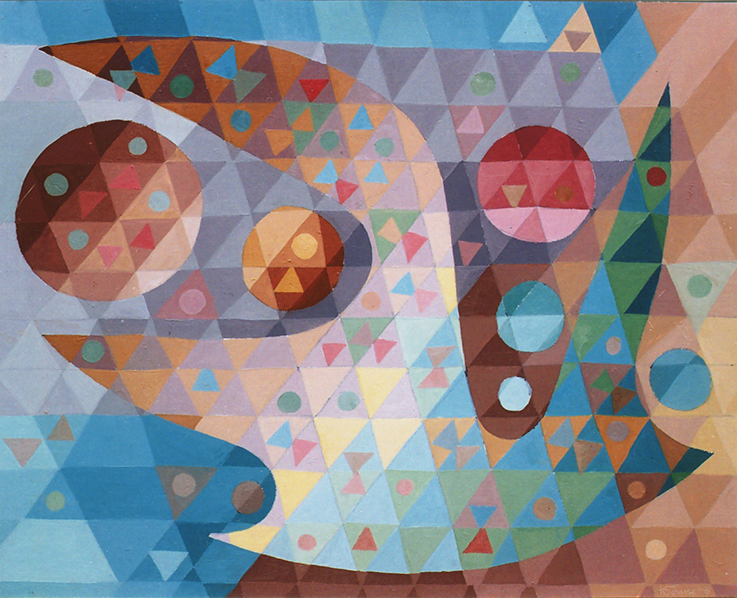
7 “Andante”, huile sur panneau, 50×61 cm, 1978
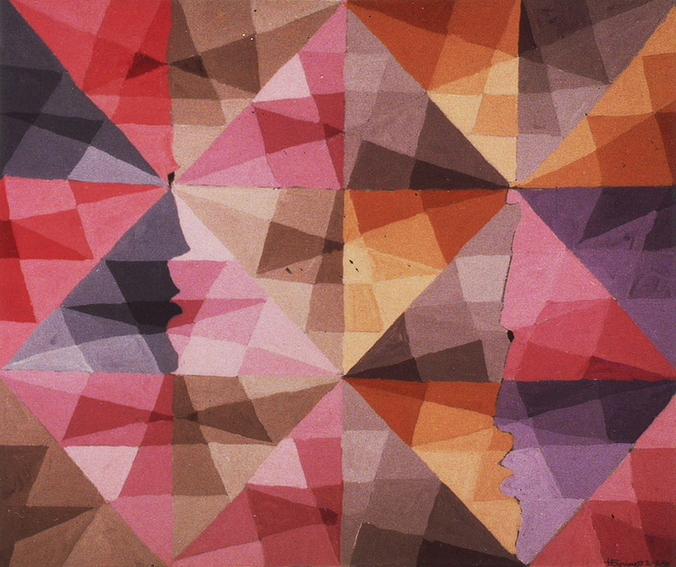
8 “Sans titre”, gouache, 38×46 cm, 1998
In addition to his studio, Tony Gonnet leaves his Journals, in which he wrote from 1940 to 1960, and his archives. Both will be preserved by the Institut Mémoires de l’Edition Contemporaine (IMEC), at the Ardenne Abbey near Caen.
While his first Parisian exhibit was, as mentioned, prefaced by Jean Genet, it is Pierre Courthion who prefaced that of 1957; it is Jean Cassou, former director of the Musée d’Art Moderne who did the same for his exhibit at the Sénanque Abbey in 1971. In 1986 Serge Reggiani patronized his last Parisian exhibit and, in 2005, at the request of deputy mayor Jean-Marc Roubaud, a posthumous exhibit was shown at Villeneuve-lès-Avignon.
THE GONNET COUPLE
In March, 1964, Tony married Hatice Bagana, the daughter of a Turkish diplomat. They lived together for 45 years. A friend of the poet Nazim Hikmet and the writer Yachar Kemal, Hatice Gonnet-Bagana is a CNRS researcher emerita. Her field is Hittite civilization, a culture of Anatolia in the Second millennium B.C., contemporary with Pharaonic Egypt.
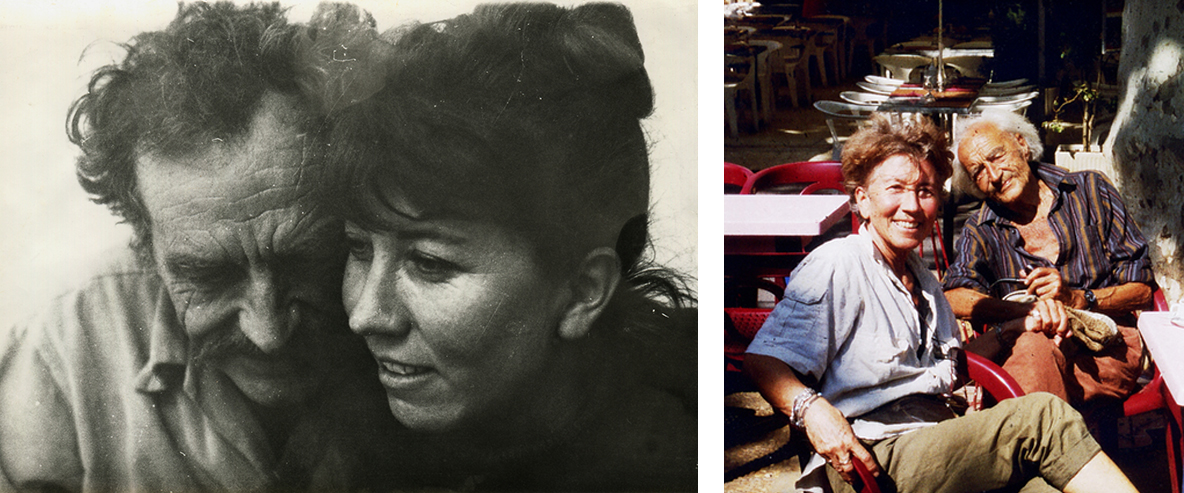
Tony and Hatice Gonnet in 1965, and then at Aigues-Mortes in 1995
Since Tony passed away in 2004, Hatice divides her time between Paris and Provence, in the couple’s house in Serviers near Uzès, where she has kept a large amount of her husband’s work (1940-2002 period).
THE HOUSE & STUDIO IN UZÈS, FRANCE
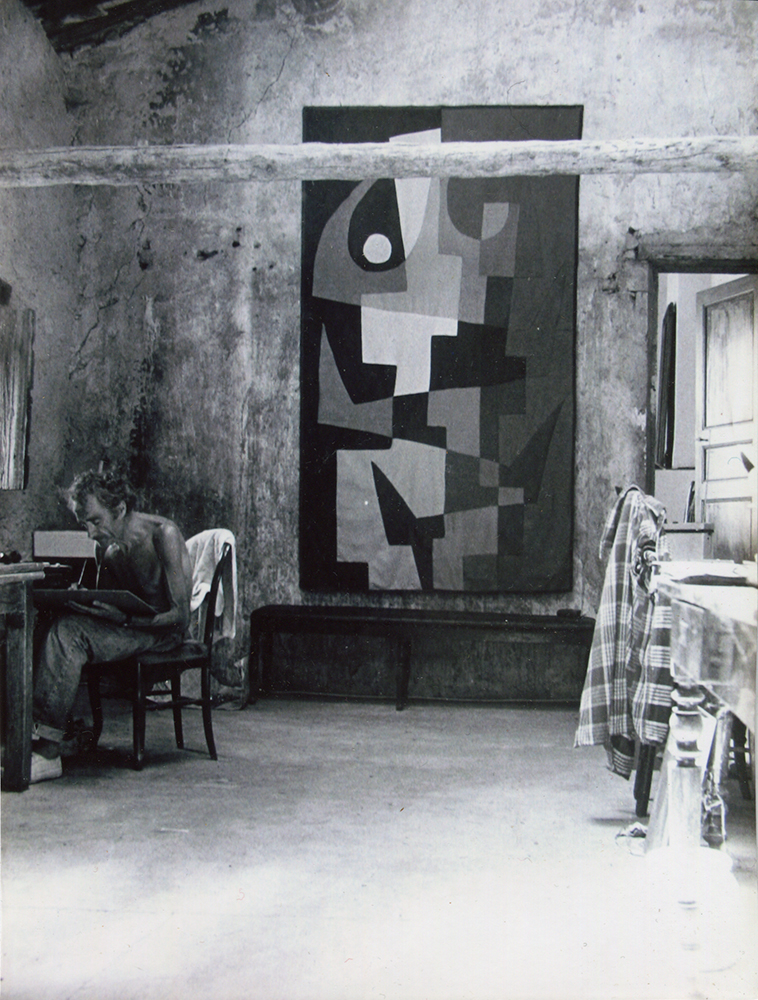
Tony in his studio
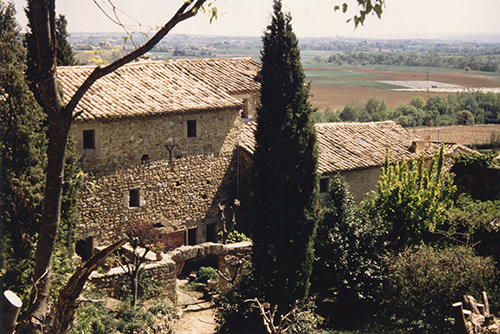
West facade, with the view towards Uzès.
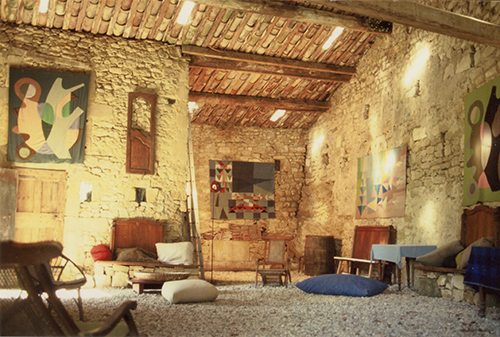
The old barn where are exhibited the tapestries.
From left to right : the gallery, Tony’s studio, the barn and the living room.
BOOK & ARTICLES
Jacques Lefort
Tony Gonnet, Itinéraire d’un peintre du surréalisme à l’abstraction
Édition Méroé
2017
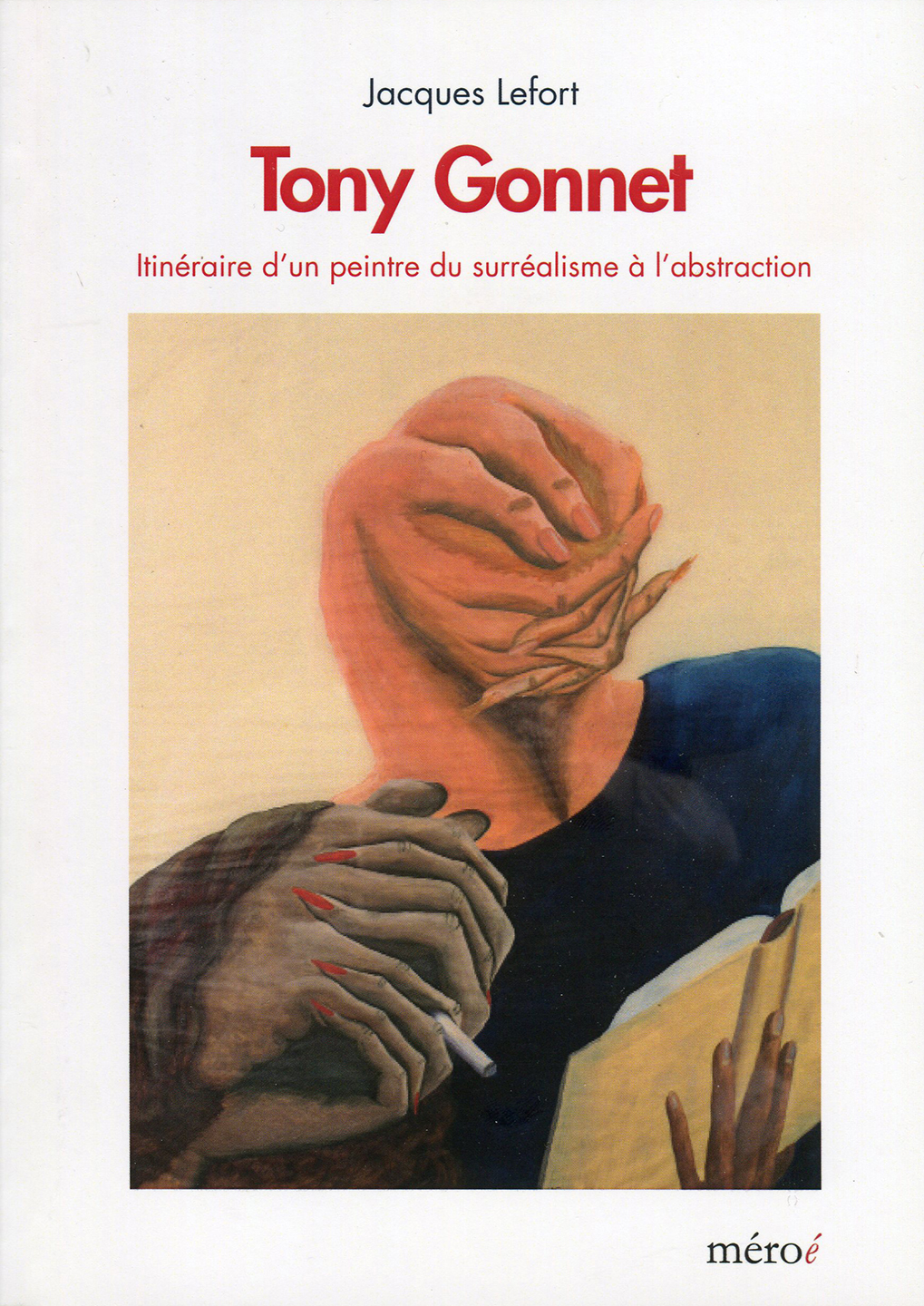
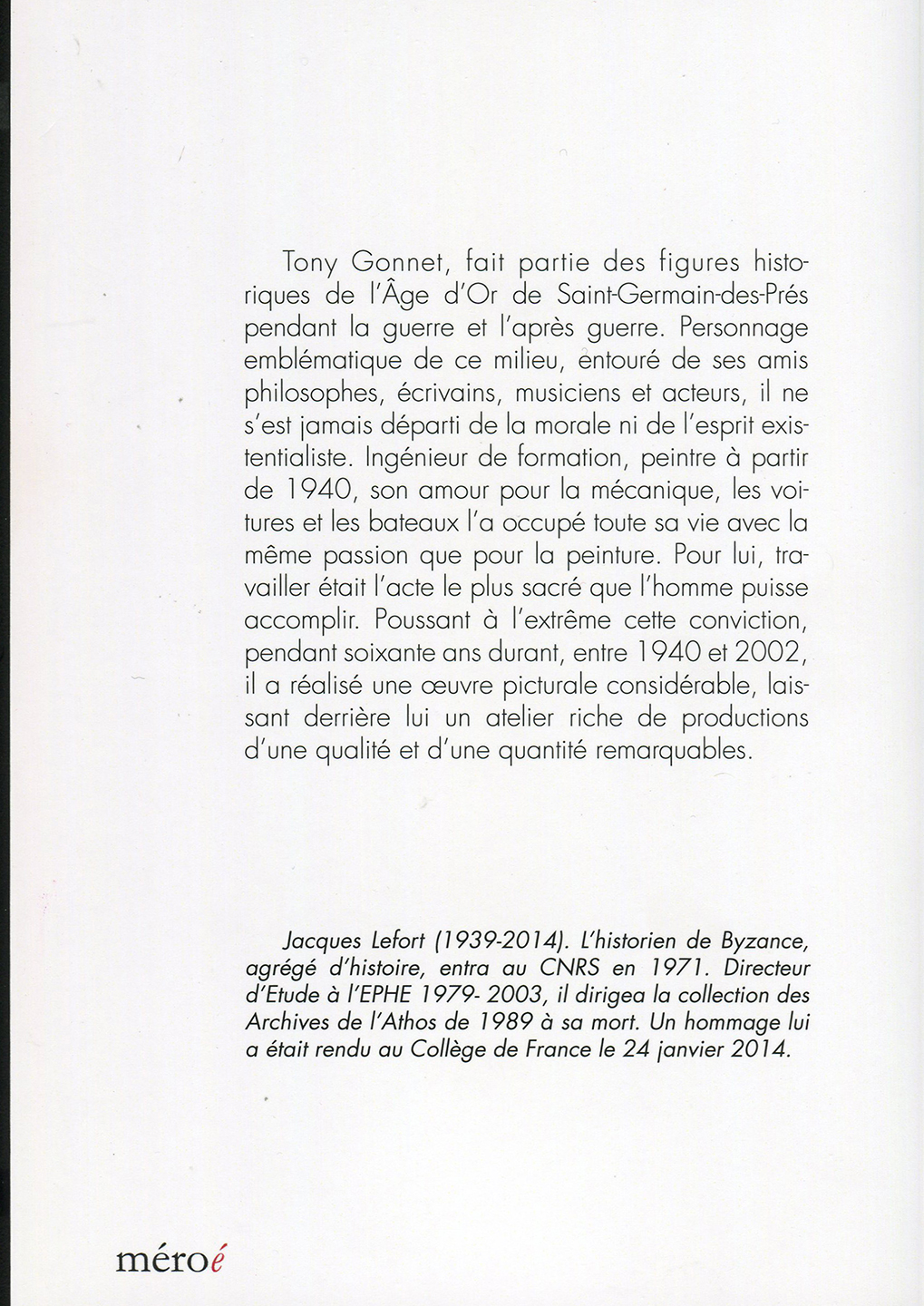
Jean Cassou
Text published in 1970 for the preface of
the exhibitions at the Cimaises Ventadour
in Paris, and at the Abbaye de Sénanque
at Gorde in 1971.
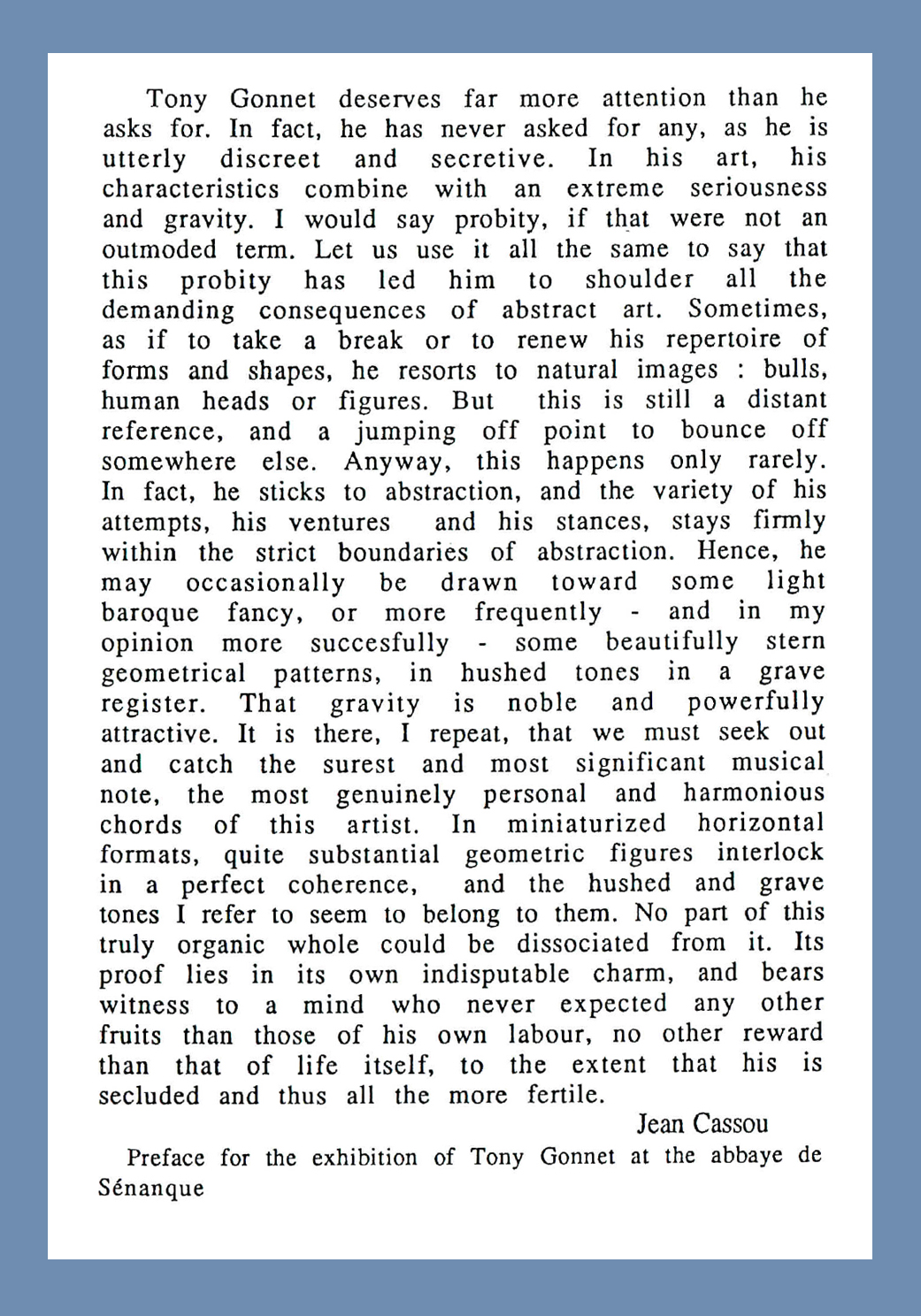
Pierre Courthion
Text published in 1960 for the
Tony Gonnet’s exhibition at the
Gallery de l’Ancienne Comédie in Paris.

